Ozdemir Can Kara
Towards Design and Development of an ArUco Markers-Based Quantitative Surface Tactile Sensor
Oct 12, 2023Abstract:In this paper, with the goal of quantifying the qualitative image outputs of a Vision-based Tactile Sensor (VTS), we present the design, fabrication, and characterization of a novel Quantitative Surface Tactile Sensor (called QS-TS). QS-TS directly estimates the sensor's gel layer deformation in real-time enabling safe and autonomous tactile manipulation and servoing of delicate objects using robotic manipulators. The core of the proposed sensor is the utilization of miniature 1.5 mm x 1.5 mm synthetic square markers with inner binary patterns and a broad black border, called ArUco Markers. Each ArUco marker can provide real-time camera pose estimation that, in our design, is used as a quantitative measure for obtaining deformation of the QS-TS gel layer. Moreover, thanks to the use of ArUco markers, we propose a unique fabrication procedure that mitigates various challenges associated with the fabrication of the existing marker-based VTSs and offers an intuitive and less-arduous method for the construction of the VTS. Remarkably, the proposed fabrication facilitates the integration and adherence of markers with the gel layer to robustly and reliably obtain a quantitative measure of deformation in real-time regardless of the orientation of ArUco Markers. The performance and efficacy of the proposed QS-TS in estimating the deformation of the sensor's gel layer were experimentally evaluated and verified. Results demonstrate the phenomenal performance of the QS-TS in estimating the deformation of the gel layer with a relative error of <5%.
Design and Development of a Novel Soft and Inflatable Tactile Sensing Balloon for Early Diagnosis of Colorectal Cancer Polyps
Sep 18, 2023Abstract:In this paper, with the goal of addressing the high early-detection miss rate of colorectal cancer (CRC) polyps during a colonoscopy procedure, we propose the design and fabrication of a unique inflatable vision-based tactile sensing balloon (VTSB). The proposed soft VTSB can readily be integrated with the existing colonoscopes and provide a radiation-free, safe, and high-resolution textural mapping and morphology characterization of CRC polyps. The performance of the proposed VTSB has been thoroughly characterized and evaluated on four different types of additively manufactured CRC polyp phantoms with three different stiffness levels. Additionally, we integrated the VTSB with a colonoscope and successfully performed a simulated colonoscopic procedure inside a tube with a few CRC polyp phantoms attached to its internal surface.
A Smart Handheld Edge Device for On-Site Diagnosis and Classification of Texture and Stiffness of Excised Colorectal Cancer Polyps
Sep 18, 2023Abstract:This paper proposes a smart handheld textural sensing medical device with complementary Machine Learning (ML) algorithms to enable on-site Colorectal Cancer (CRC) polyp diagnosis and pathology of excised tumors. The proposed unique handheld edge device benefits from a unique tactile sensing module and a dual-stage machine learning algorithms (composed of a dilated residual network and a t-SNE engine) for polyp type and stiffness characterization. Solely utilizing the occlusion-free, illumination-resilient textural images captured by the proposed tactile sensor, the framework is able to sensitively and reliably identify the type and stage of CRC polyps by classifying their texture and stiffness, respectively. Moreover, the proposed handheld medical edge device benefits from internet connectivity for enabling remote digital pathology (boosting the diagnosis in operating rooms and promoting accessibility and equity in medical diagnosis).
Towards Reliable Colorectal Cancer Polyps Classification via Vision Based Tactile Sensing and Confidence-Calibrated Neural Networks
Apr 25, 2023Abstract:In this study, toward addressing the over-confident outputs of existing artificial intelligence-based colorectal cancer (CRC) polyp classification techniques, we propose a confidence-calibrated residual neural network. Utilizing a novel vision-based tactile sensing (VS-TS) system and unique CRC polyp phantoms, we demonstrate that traditional metrics such as accuracy and precision are not sufficient to encapsulate model performance for handling a sensitive CRC polyp diagnosis. To this end, we develop a residual neural network classifier and address its over-confident outputs for CRC polyps classification via the post-processing method of temperature scaling. To evaluate the proposed method, we introduce noise and blur to the obtained textural images of the VS-TS and test the model's reliability for non-ideal inputs through reliability diagrams and other statistical metrics.
Pit-Pattern Classification of Colorectal Cancer Polyps Using a Hyper Sensitive Vision-Based Tactile Sensor and Dilated Residual Networks
Nov 13, 2022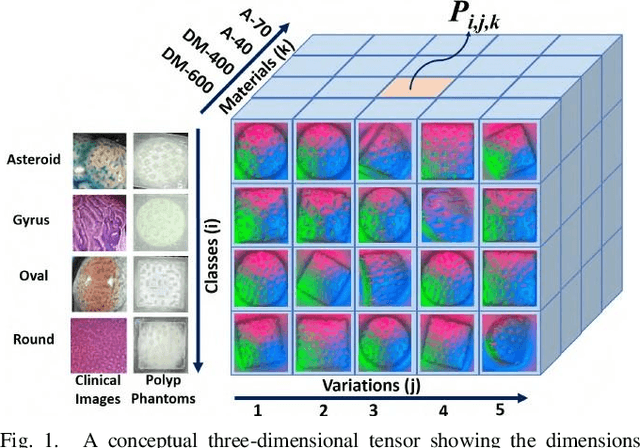
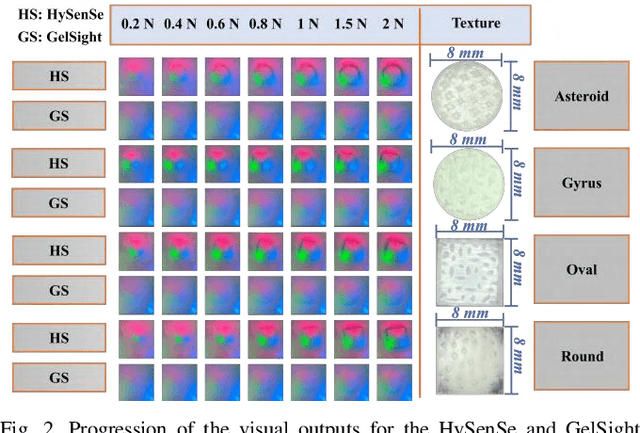
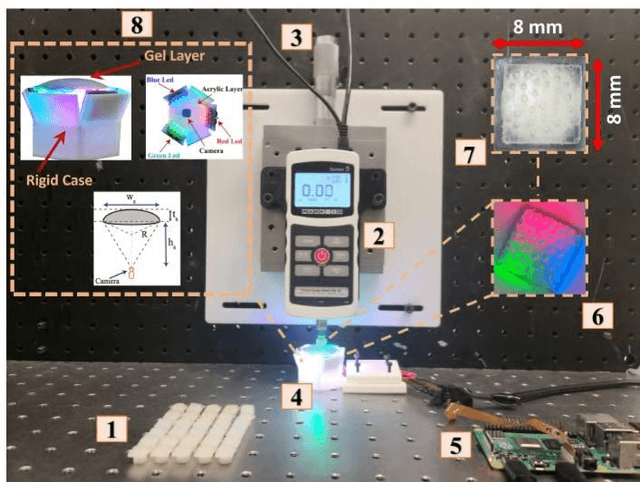
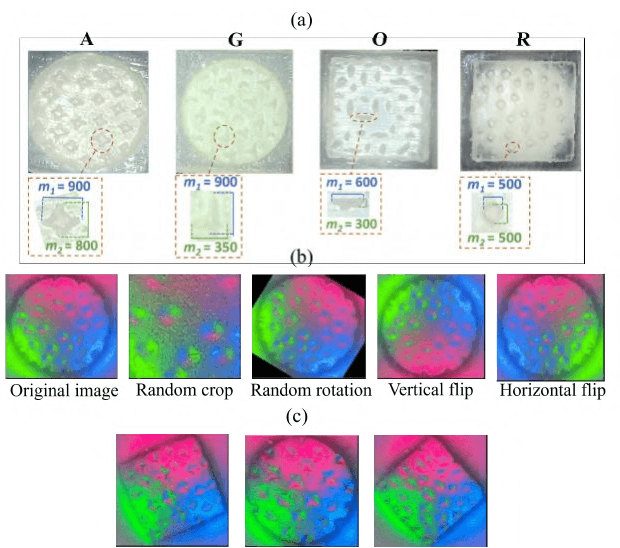
Abstract:In this study, with the goal of reducing the early detection miss rate of colorectal cancer (CRC) polyps, we propose utilizing a novel hyper-sensitive vision-based tactile sensor called HySenSe and a complementary and novel machine learning (ML) architecture that explores the potentials of utilizing dilated convolutions, the beneficial features of the ResNet architecture, and the transfer learning concept applied on a small dataset with the scale of hundreds of images. The proposed tactile sensor provides high-resolution 3D textural images of CRC polyps that will be used for their accurate classification via the proposed dilated residual network. To collect realistic surface patterns of CRC polyps for training the ML models and evaluating their performance, we first designed and additively manufactured 160 unique realistic polyp phantoms consisting of 4 different hardness. Next, the proposed architecture was compared with the state-of-the-art ML models (e.g., AlexNet and DenseNet) and proved to be superior in terms of performance and complexity.
HySenSe: A Hyper-Sensitive and High-Fidelity Vision-Based Tactile Sensor
Nov 08, 2022Abstract:In this paper, to address the sensitivity and durability trade-off of Vision-based Tactile Sensor (VTSs), we introduce a hyper-sensitive and high-fidelity VTS called HySenSe. We demonstrate that by solely changing one step during the fabrication of the gel layer of the GelSight sensor (as the most well-known VTS), we can substantially improve its sensitivity and durability. Our experimental results clearly demonstrate the outperformance of the HySenSe compared with a similar GelSight sensor in detecting textural details of various objects under identical experimental conditions and low interaction forces (<= 1.5 N).
Classification of Colorectal Cancer Polyps via Transfer Learning and Vision-Based Tactile Sensing
Nov 08, 2022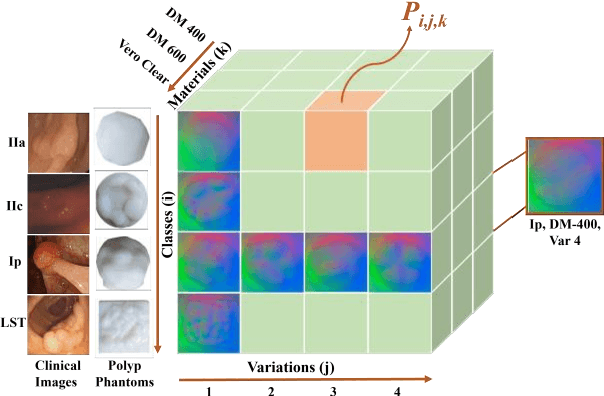
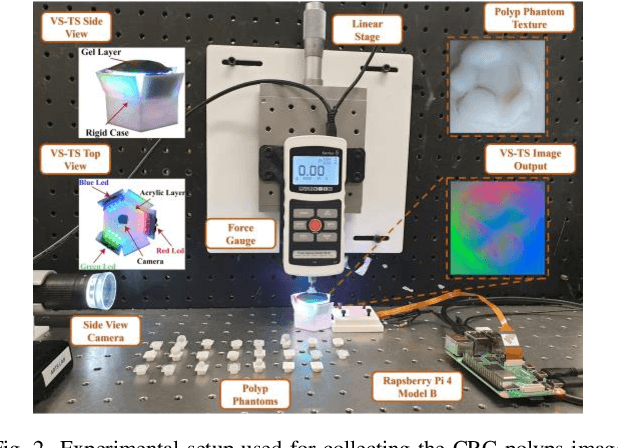
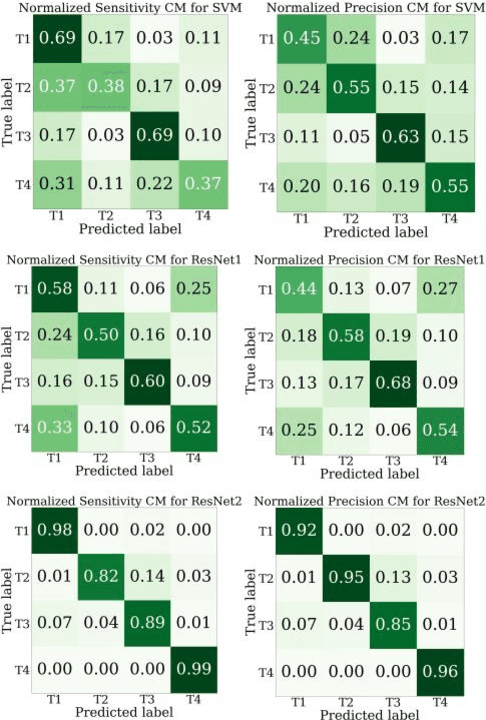

Abstract:In this study, to address the current high earlydetection miss rate of colorectal cancer (CRC) polyps, we explore the potentials of utilizing transfer learning and machine learning (ML) classifiers to precisely and sensitively classify the type of CRC polyps. Instead of using the common colonoscopic images, we applied three different ML algorithms on the 3D textural image outputs of a unique vision-based surface tactile sensor (VS-TS). To collect realistic textural images of CRC polyps for training the utilized ML classifiers and evaluating their performance, we first designed and additively manufactured 48 types of realistic polyp phantoms with different hardness, type, and textures. Next, the performance of the used three ML algorithms in classifying the type of fabricated polyps was quantitatively evaluated using various statistical metrics.
 Add to Chrome
Add to Chrome Add to Firefox
Add to Firefox Add to Edge
Add to Edge